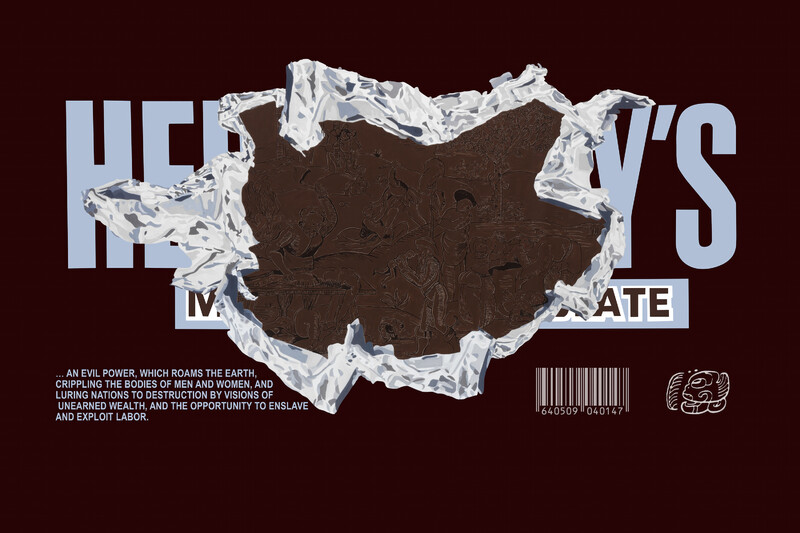
Bittersweet – Hershey's
Her work encompasses a wide range of media—installation, video, muralism, sculpture, and public intervention—which she uses to investigate the politics that permeate social and economic ties. By generating aesthetic exercises with objects and images of everyday consumption, Cuevas encourages us to rethink the role corporations play in the exploitation of natural resources and in the conditions of social inequality around the world.
Through her work, she explores familiar visual references and questions the ideas present in our political imaginary to locate channels of social communication. In her interdisciplinary projects, elements of anthropology, ecology, and marketing converge.
Cuevas studied at Escuela Nacional de Artes Plásticas (ENAP) of the Universidad Nacional Autónoma de México (1993-1996). She founded Mejor Vida Corp. and joined Irational.org in 1998. She created the International Understanding Foundation [IUF] in 2016.
She has been an artist resident in the following programs: Berliner Künstlerprogramm at Deutscher Akademischer Austauschdienst (DAAD), Germany, 2003; Media Art of the Foundation of Lower Saxony at the Edith-Russ-Haus, Germany, 2003; Delfina Foundation, London, 2001; and The Banff Centre for Arts, Canada, 1998.
Cannibalism holds significant meaning for the artist, particularly in its historical use to rationalize the "civilization" of Indigenous populations in the Americas by European colonizers. Additionally, it serves as a metaphor for contemporary cycles of production and consumption in Mexico. For instance, a substantial portion of the country's cocoa is exported to Europe for the production of high-quality chocolate, while Mexico primarily relies on lower-cost cocoa imports from Africa for its own chocolate production. As a response to the prevalent and racially-biased practice of depicting non-Europeans as cannibals, Minerva Cuevas’ Bittersweet–Hershey's is a monumental painting featuring a wrapped Hershey's milk chocolate bar, with its centre torn open to reveal a depiction of a historical bas-relief illustrating a scene where Europeans consume one another. This artwork illustrates that cannibals, much like chocolate bars, come in many different varieties.
This lightbox image is presented in conversation with Cuevas’ sculptural work, Famine 3.6, featured in the Blackwood Gallery. Both works centre on chocolate, exploring the intricate history and cultural significance of cocoa, while addressing a range of difficult themes including European colonialism, extractivist capitalism, and the ongoing exploitations of Latin America by the West.

The Blackwood
University of Toronto Mississauga
3359 Mississauga Road
Mississauga, ON L5L 1C6
[email protected]
(905) 828-3789
The galleries are open. Hours of operation: Monday–Saturday, 12–5pm.
Facebook | Twitter | Instagram
Sign up to receive our newsletter.
The Blackwood is situated on the Territory of the Mississaugas of the Credit, Seneca, and Huron-Wendat.